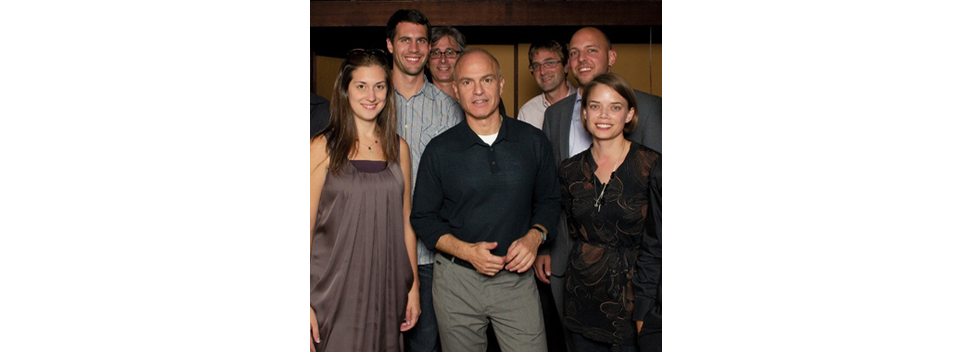Syracuse Architecture Students Get Real
SYRACUSE, NY -- Syracuse University's architecture program for undergraduates was rated number two in the United States in 2010 by Architectural Record magazine. So, it comes as no surprise that the school has been turning heads recently with its innovative teaching techniques.
In an exclusive interview, Dean Mark Robbins (as seen, with students, in Photo) gives Thalo some insight into Syracuse’s success and discusses one of the program’s latest projects: creating affordable, sustainable homes in Syracuse.
thalo: It is said that the architecture program at Syracuse has been a part of transforming the city. How so?
Mark Robbins: The Syracuse University School of Architecture has become an integral part of the equation. Urban revitalization is complex and includes many factors, like education and workforce job creation. Innovative architecture, landscape architecture, and urban design approaches can help strengthen a community in ways that are both actual and symbolic.
th: How did the drive to create affordable, sustainable homes in Syracuse come about?
MR: An international design competition [“From the Ground Up: Innovative Green Homes – A Design Competition for the Single Family House”] was held in partnership with the CoE [Syracuse Center of Excellence in Environmental and Energy Systems] and Home HeadQuarters. The winning designs were built and sold, making the case for high-performance, affordable, and sustainable housing. … These houses have received very positive attention, in part, because of the level of inventiveness employed by an array of architect, who might not ordinarily work in a post-industrial city of our size. The houses have sold for above market price, and signal the continued value of this unique enclave.
th: What skills do you think your students learned through this experience that they wouldn't have been able to learn in the classroom?
MR: On the university level, this approach supports Chancellor Nancy Cantor’s vision of Scholarship in Action, in which the academy forges creative partnerships across disciplines and beyond our campus boundaries. In the work on the Near Westside [one of the first residential neighborhoods in Syracuse], the [School Of Architecture] students are able to see a process from initial design to completion. This includes interacting directly with architects in lecture settings and master classes, as well as working alongside contractors, interviewing community members, developing construction documents, and all of the stages that go into a real project. Through these experiences, they see the work of the classroom put into practice and learn about the realities of the marketplace, budgets, and client interaction.
th: How have the students responded to working in real-life situations?
MR: Students may find all of this challenging at times, but the notion of putting unfamiliar conditions in a student’s path is a hallmark of a solid liberal arts education. Design is all about addressing a complex set of conditions without preconceptions and arriving at solutions that are fresh. Through work like this and work in the classroom, students become more resilient as thinkers and are able to see the material for their design work in the stuff of imagination and daily life.
th: How can graduates take this idea and expand on it in their own hometowns across the country?
MR: [School Of Architecture] students learn the ability to problem solve, which they can apply on multiple scales and locations. As the city of Syracuse is much like other post-industrial cities across the country, students can apply their learning to areas of disinvestment, understanding the assets available in all situations.
Photos Courtesy of Mark Robbins








